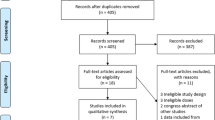Abstract
Objective
The objective of this study was to provide a comprehensive comparison of the long term safety and tolerability of clopidogrel, a new adenosine diphosphate (ADP) receptor antagonist that inhibits platelet activation induced by ADP, and aspirin (acetylsalicylic acid).
Patients and Methods
The study population comprised 19 185 patients with symptomatic atherosclerosis manifested as recent ischaemic stroke, recent myocardial infarction or symptomatic peripheral arterial disease. Patients were randomised to receive clopidogrel 75 mg/day or aspirin 325 mg/day for a minimum of 1 year and a maximum of 3 years.
Results
Compared with aspirin, clopidogrel reduced the combined risk of ischaemic stroke, myocardial infarction or vascular death by 8.7% (p = 0.043). The incidence of early permanent discontinuations of the study drug due to adverse events was almost identical in both treatment groups (11.94% for clopidogrel vs 11.92% for aspirin). Reported neutropenia was similar in the clopidogrel and aspirin groups (0.10 vs 0.17%, respectively) with corresponding rates (0.05 vs 0.04%, respectively) for severe neutropenia. Thrombocytopenia was identical in the clopidogrel and aspirin groups (0.26%), with the rates of severe thrombocytopenia being 0.19 vs 0.10%, respectively. None of these observed differences was statistically significant. The overall incidence of haemorrhagic events did not differ statistically significantly between treatment groups (9.27% for clopidogrel vs 9.28% for aspirin; p = 0.98). There was a trend towards a lower incidence of intracranial haemorrhage in the clopidogrel group (0.31%) compared with the aspirin group (0.42%). Any reported gastrointestinal haemorrhage was significantly less frequent with clopidogrel (1.99%) than with aspirin (2.66%) [p < 0.002]. The corresponding data for severe gastrointestinal bleeding were 0.49 vs 0.71%; p < 0.05. Overall, there were significantly fewer gastrointestinal adverse events with clopidogrel than with aspirin (27.1 vs 29.8%; p < 0.001), with less abdominal pain, dyspepsia, constipation, or peptic, gastric, or duodenal ulceration with clopidogrel. Diarrhoea was significantly more common in the clopidogrel group (4.46 vs 3.36%; p <0.001), although the incidence of severe diarrhoea (0.23 vs 0.11%) was low and was not significantly different between groups. There were significantly more patients with rash in the clopidogrel group (6.0%) compared with the aspirin group (4.6%) [p < 0.001]. However, these events were generally mild and transient in nature.
Conclusion
Given the favourable benefit/risk ratio, clopidogrel represents a clinically important advance in the treatment of patients with manifest atherosclerotic disease.
Similar content being viewed by others

References
Murray CJL, Lopez AD. Global mortality, disability and the contribution of risk factors: global burden of disease study. Lancet 1997; 349: 1436–42
Antiplatelet Trialists’ Collaboration. Collaborative overview of randomised trials of antiplatelet therapy — I: prevention of death, myocardial infarction, and stroke by prolonged antiplatelet therapy in various categories of patients. BMJ 1994; 308: 81–106
Moloney BA. An analysis of the side effects of ticlopidine. In: Hass WK, Easton JD, editors. Ticlopidine, platelets and vascular disease. New York: Springer, 1993: 117–39
Solomon DH, Hart RG. Antithrombotic therapies for stroke prevention. Curr Opin Neurol 1994; 7: 48–53
Smith P, Arnesen H, Holme I. The effect of warfarin on mortality and reinfarction after myocardial infarction. N Engl J Med 1990; 323: 147–52
ASPECT Research Group. Effect of long-term oral anticoagulant treatment on mortality and cardiovascular morbidity after myocardial infarction. Lancet 1994; 343: 499–503
Sixty Plus Reinfarction Study Research Group. Risks of long-term oral anticoagulant therapy in elderly patients after myocardial infarction. Lancet 1982; I: 64–8
CAPRIE Steering Committee. A randomised, blinded, trial of clopidogrel versus aspirin in patients at risk of ischaemic events (CAPRIE). Lancet 1996; 348: 1329–39
Green D. CAPRIE trial [letter]. Lancet 1997; 349: 354–5
Young NS. Aplastic anaemia. Lancet 1995; 346: 228–32
Hass KW, Easton JD, Adams HP, et al. A randomised trial comparing ticlopidine hydrochloride with aspirin for the prevention of stroke in high-risk patients. N Engl J Med 1989; 321: 501–7
Bennet CL, Weinberg PD, Rozenberg-Ben-Dror K, et al. Thrombotic thrombocytopenic purpura associated with ticlopidine: a review of 60 cases. Ann Intern Med 1998; 128: 541–4
Steinhubl SR, Tan WA, Foody JM, et al. Incidence and clinical course of thrombotic thrombocytopenic purpura due to ticlopidine following coronary stenting. JAMA 1999; 281: 806–10
Stalnikowicz-Darvasi R. Gastrointestinal bleeding during low-dose aspirin administration for prevention of arterial occlusive events: a critical analysis. J Clin Gastroenterol 1995; 21: 13–6
Slattery J, Warlow CP, Shorrock CJ, et al. Risks of gastrointestinal bleeding during secondary prevention of vascular events with aspirin — analysis of gastrointestinal bleeding during the UK-TIA trial. Gut 1995; 37: 509–11
Weil J, Colin-Jones D, Langman M, et al. Prophylactic aspirin and risk of peptic ulcer bleeding. BMJ 1995; 310: 827–30
Robert A. Cytoprotection by prostaglandins. Gastroenterology 1979; 77: 761–7
Vane JR. Inhibition of prostaglandin synthesis as a mechanism of action for aspirin-like drugs. Nature New Biol 1971; 231: 232–5
Herbert J-M. Clopidogrel and antiplatelet therapy. Exp Opin Invest Drugs 1994; 3: 449–55
Cappelleri JC, Lau J, Kupelnick B, et al. Efficacy and safety of different aspirin dosages on vascular diseases in high-risk patients: a metaregression analysis. Online J Curr Clin Trials 1995; Doc. No. 174
Diener H, Cunha L, Forbes C, et al. European Stroke Prevention Study 2: dipyridamole and acetylsalicylic acid in the secondary prevention of stroke. J Neurol Sci 1996; 143: 1–13
Author information
Authors and Affiliations
Rights and permissions
About this article
Cite this article
Harker, L.A., Boissel, JP., Pilgrim, A.J. et al. Comparative Safety and Tolerability of Clopidogrel and Aspirin. Drug-Safety 21, 325–335 (1999). https://doi.org/10.2165/00002018-199921040-00007
Published:
Issue Date:
DOI: https://doi.org/10.2165/00002018-199921040-00007



